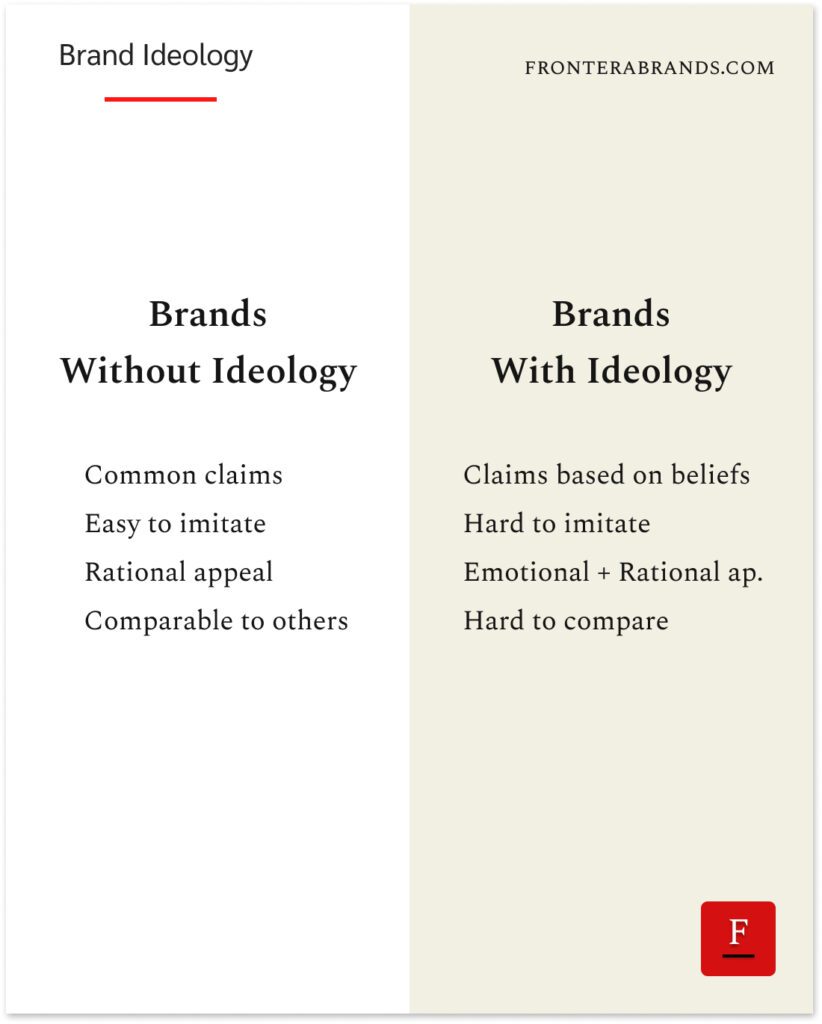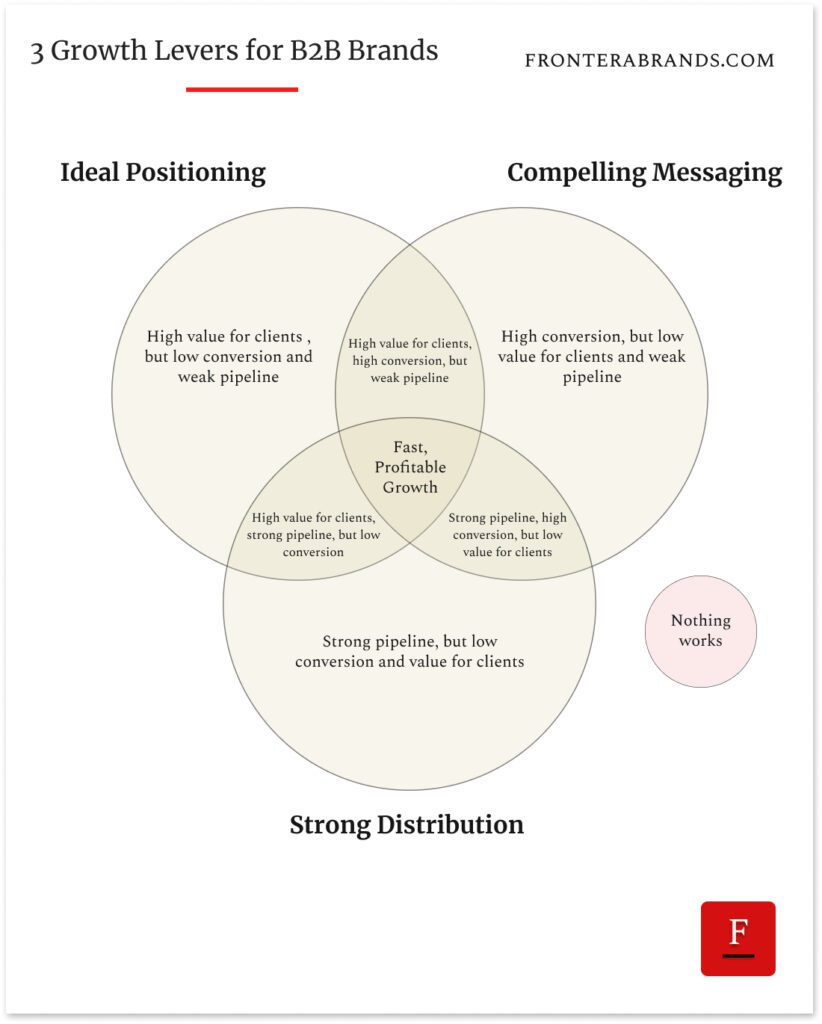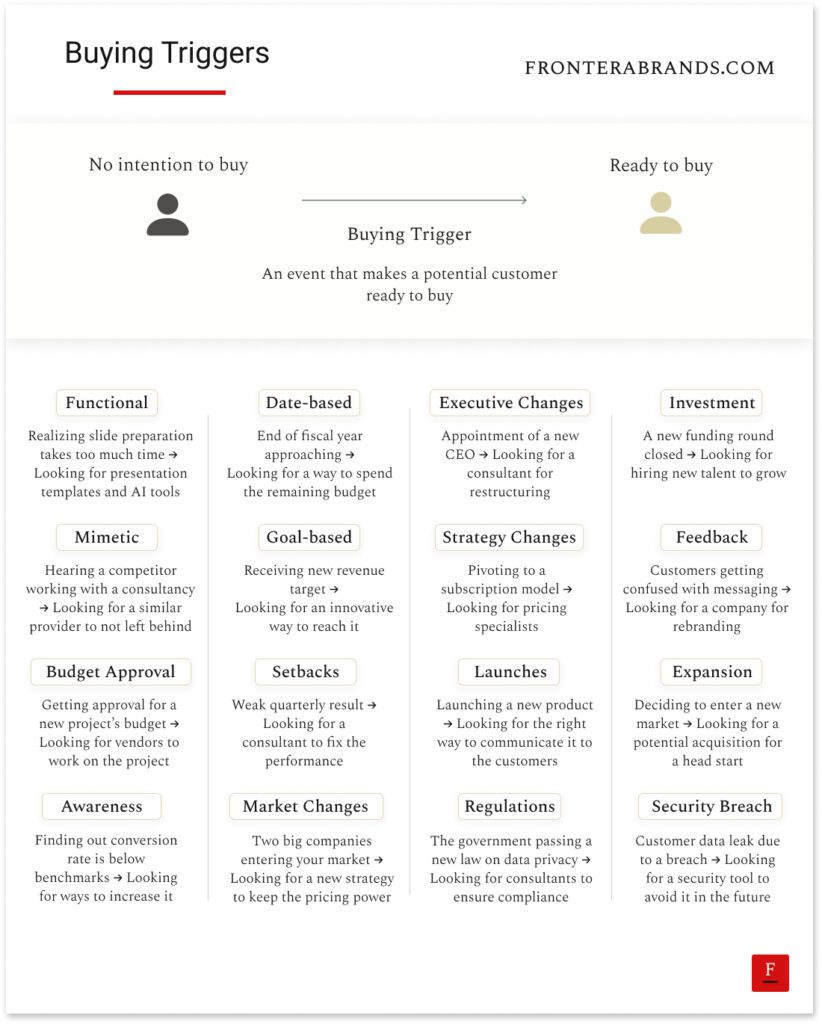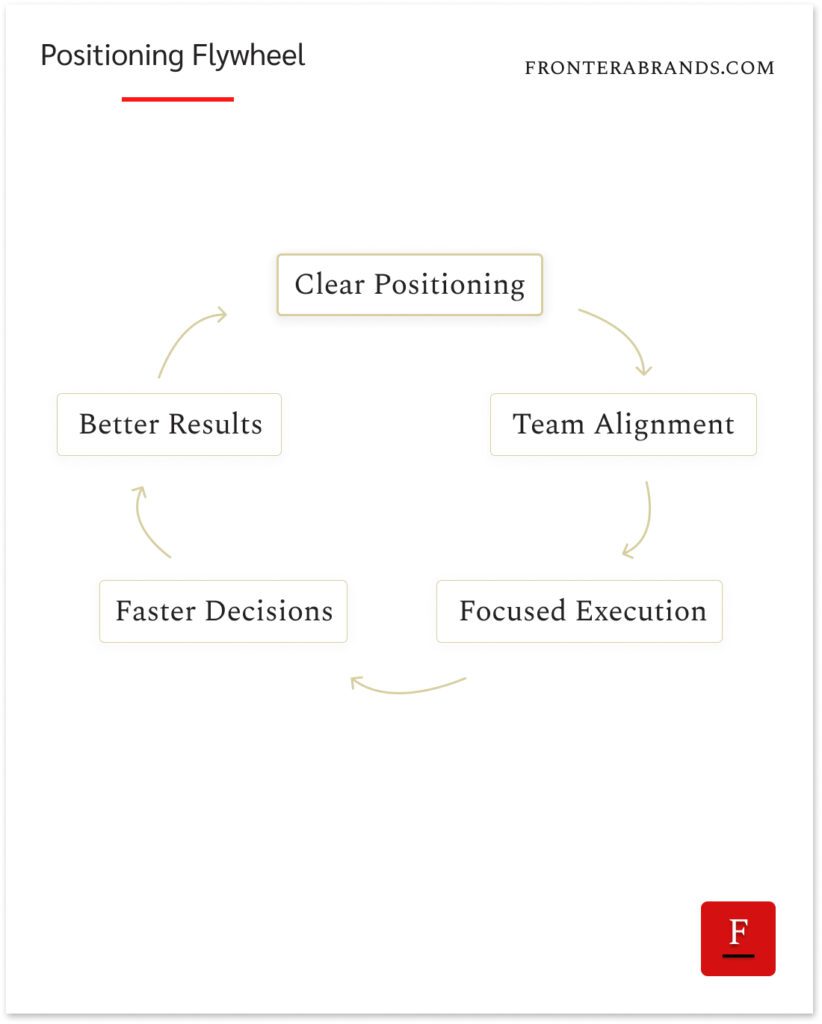♦️ Why your brand needs an ideology to stand out (and how to develop one)
|
Think about it. How come some brands have passionate believers like political parties? People even do irrational stuff for some brands. Like getting into a line at 5 a.m. to buy products or defending it against negative comments online as if somebody cursed their mother. It’s almost like some brands become part of customers’ identities. But how does that happen? What causes a brand to turn from just a random business into a part of buyers’ identity? Well, one answer to this question is ideology. Let me elaborate. We repeatedly talk about how buyers act on emotions. For high-stakes decisions, we decide based on emotions and justify with logic. Your emotions buy a Rolex first — “I deserve it as a symbol of my achievement.” Your logic justifies it — “It’s a good investment!” But all of this happens because of Rolex’s successful indoctrination. Rolex has an ideology. They believe Rolex is an emotional symbol of every achievement.
Why would somebody pay thousands for a watch? But others buy into the idea. And when customers believe in a brand’s ideology, they connect with it at an emotional level. They are not simple customers anymore. They become believers — and the brand becomes part of who they are. So they start defending it and even try converting other people. Just like a political party. We’ve talked about how Slack succeeded after getting opinionated. They said email was an inefficient way to work. They took sides. And just like a political party’s ideology — some buyers believed in that, some others didn’t. But it differentiated Slack from all other group chat apps. Using Slack in your organization gained meaning and its believers started converting others.
You see where I’m getting at? If you want an emotional connection, your brand needs an ideology. This is even more important in B2B where services are abstract. Because ideology separates an authority from just another provider. As competition keeps increasing in every category, buyers are more likely to buy from you if they believe in your ideas. So a brand ideology does more than attract attention. It shapes perception, increases your pricing power, and builds loyalty. Clients don’t choose you just for what you do — but for what you believe in. In crowded B2B markets, that’s a serious edge. So how do you do it? How can you go beyond cliché beliefs like “teamwork” and give customers a new point of view they can believe in? Here are the three steps: 1. Start with your industryMany B2B brands are afraid of taking sides. They act like there’s a “default” way to do things — and everyone must follow it. Well, they are wrong. Let’s make a thought experiment. Which one is better: Data-driven decision-making or intuition? Delegating everything like Buffett or micromanaging like Steve Jobs? Operating in a transparent way like Patagonia? Or being secretive like Apple? If we were to make a poll, I bet the results would be close to 50-50 for each question. Because there is no right or wrong. These are different ways of doing things — and they can all work. So you shouldn’t be afraid of taking sides. On the contrary, you should express your “ideology” boldly. To formulate a point of view, start with your industry. Use these questions:
But beware. Not every answer to these questions can be a point of view. To become part of your point of view, these ideas should:
2. Turn your ideology into a manifestoThe Bible has 10 commandments. The U.S. Bill of Rights has 10 amendments. Numbered lists written as a manifesto make complex ideas clear and memorable. So you can use them also for your brand’s ideology. It has two benefits. First, it makes things clear for you and your employees. You know what you stand for. Second, it becomes much easier to convey it to the market and infuse it into your messaging. We’ve talked about how Marvin Bower wrote down his beliefs about how McKinsey should operate. And those ideas turned McKinsey into a global giant where their clients represent 20% of global GDP. So once you identify your key opinions, turn them into a manifesto. By the way, if you are wondering about Frontera’s manifesto, you can read it here. 3. Package it with a nameHave you ever heard of design thinking? It’s a popular innovation methodology. If you’ve heard of it, it’s thanks to a consultancy called IDEO. IDEO didn’t invent design thinking, but they believed in its principles and turned it into a more practical methodology in business. They had a strong opinion that design should be user-centered (instead of business) and that anybody could be creative if they were given the tools. So they advocated for design thinking everywhere. They created design thinking workshops/courses and explained the idea with their content. Design thinking became a trend in product design circles and their brand was associated with it. Were there other innovation consultancies that provided similar services? Sure. But they didn’t have an ideology. IDEO had design thinking. So companies wanted to work with IDEO — because their executives believed in IDEO’s ideas.
Names have power. They distill big ideas into a few words people can remember and share. So once you clarify your ideology, find a catchy name to package it. It will become more memorable. Plus, you’ll build intellectual property to differentiate your business. Remember. In a world where there are hundreds of alternatives for everything, buyers don’t only buy services anymore. They buy ideas. Why does every B2B brand website sound like they were all written by the same person in 2003?You’re great at what you do. Your clients love you. But new prospects? They don't get it. They don't see what makes you different from your website, ads, or content. So they go with the big, familiar firms as the "safe" choice. You know why? Because your value is only as good as your messaging. If your website, ads, or content don't clearly show how you're different, prospects won’t see it. You become just another provider. And that costs you sales without you knowing — every single day. We help B2B businesses get clear on what makes them different and convey that value with compelling messaging. So your website, ads, and content don’t just perform better — they sell. Want to stop losing sales to weak messaging? Fill out this form, let’s chat. You can reply to this email with your thoughts and feedback. I'd be happy to hear from you — I read and reply to all messages. And you can connect with me here on LinkedIn. Ozan |
Frontera
Join 10,000+ B2B founders getting the strategies of iconic brands.
Three marketing bottlenecks keep B2B brands stuck at a certain revenue level: Wrong Positioning Ineffective Messaging Weak Distribution These problems keep the business from growing to its next stage. Some businesses just have one. Some others might have all three to a certain degree. They have different symptoms: 1. Wrong Positioning You create the wrong value and/or for the wrong clients. Your solution isn’t anchored to a specific pain or priority. You are either specialized in the wrong...
What leads your clients to look for a solution like yours? What makes them realize they have a problem? The answers to these questions matter. Because when you know your clients’ buying triggers, you can: Build your product/service for their context Talk to their real needs with your messaging Target them more easily Think about the buying triggers in our lives. Like becoming a parent. Your life changes when you learn you’ll become a parent. You start looking for parenting books, furniture...
Having clarity around your brand’s positioning has a hidden upside. We usually talk about how it helps you win clients. It raises your perceived value. It makes buyers choose you over others. But it also changes things inside the business. You know what they say. Constraints breed creativity. A blank page is scary because you can write anything. There is no constraint. But once you pick a topic, ideas start flowing. You get focused. You get creative. Clear positioning does the same. It gives...





